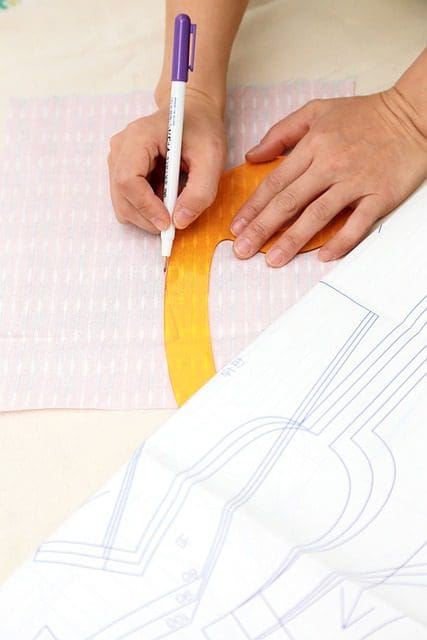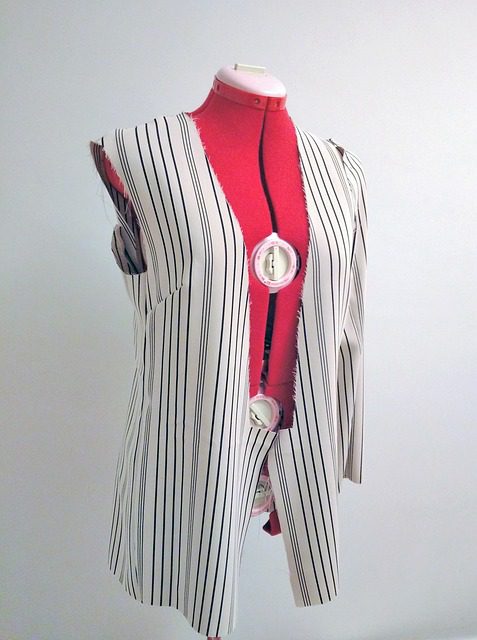Have you ever wondered how your favorite designers create collections season after season?
The secret is simple—sewing patterns. Although they appear simple diagrams at first glance, these blueprints of style are indispensable instruments in the realm of fashion design. Within these patterns lies the essential framework, fit, and canvas upon which the tapestry of creativity unfurls. They are the silent architects behind the most iconic runway moments and the timeless elegance we admire.
Let’s find out why the best sewing patterns become the magical bridge between a designer’s imagination and the world of high fashion, turning dreams into reality.
Table of Contents
1. Accuracy and Consistency:
Sewing patterns are essential for fashion design, providing accuracy, consistency, and efficiency. Patterns ensure that each piece of a garment lines up and fits together properly. They give exact specifications for how to cut and sew each part so that sleeves, collars, pockets, and other details are in the right places. Following a pattern leads to a professionally finished product with clean lines and symmetry.
You don’t have to figure out all the measurements and details from scratch each time. Patterns can be used over and over, saving hours of work. With a pattern, you can produce multiple copies of a garment that are exactly the same.
2. Time Efficiency:
When it comes to design, time is money. Sewing patterns save you loads of time, so you can focus on the creative parts of fashion design. Rather than drafting a new pattern for each garment, you can start with an existing pattern that’s close to what you want and customize it.
Using a pattern also means you can cut multiple pieces at once. Once you have the pattern laid out, you simply cut through all the layers of fabric to yield many pieces in one step. Compare that to cutting each piece individually! Being able to cut more than one garment or piece at a time results in huge time savings, especially when making multiples of the same item.
3. Reproducibility:
When you use sewing patterns, you can easily reproduce the same design in different sizes, colors, and fabrics. Once you have a pattern that fits well and looks great, you can use it over and over again to make the same style of clothing.
Patterns allow you to duplicate a garment exactly or modify it slightly each time. You can adjust the fit for different body types or change details like sleeve length, neckline, pockets, or embellishments. Using the same pattern, you can make a casual version in denim, a dressy one in silk, or a cozy one in flannel.
Mix a skirt pattern with a top pattern, or combine sleeves from one pattern with the bodice from another. The options are endless! Being able to reproduce and re-use patterns gives you a lot of creative control and the ability to make coordinating outfits. With some practice, you’ll be churning out perfectly fitted garments in no time and building a wardrobe that is uniquely your own.

4. Fit and Comfort:
Using sewing patterns allows you to create garments that are tailored to your exact measurements, resulting in a perfect fit. Patterns come in a range of sizes to suit different body types. Patterns typically provide a sizing chart that lists the specific measurements corresponding to each size. Compare your own measurements to the chart to determine the right size for you before getting started. It’s a good idea to have someone else take and record your measurements to ensure maximum accuracy. Don’t forget that it’s easier to make adjustments to a pattern that is slightly too big rather than one that is too small.
Once you’ve selected the right size, follow the instructions in the pattern to mark the pattern pieces, cut the fabric, and assemble the garment. The key to achieving a great fit is taking the time to carefully construct each part of the garment. Pin pattern pieces in place before sewing, try on the partially finished garment, and make any necessary adjustments.
5. Customization and Variety:
Sewing patterns open up a world of customization and variety for fashion designers and sewists. Rather than being limited to what’s available in stores, you can create pieces tailored to your unique style and shape.
Patterns provide a blueprint for constructing garments from scratch. By combining different pattern pieces in new ways, you can design clothing with distinctive silhouettes, details, and embellishments. Mix a fitted bodice with a full, pleated skirt. Add puffed sleeves, ruffles, or decorative trim. The possibilities are endless when you can draft and alter patterns to your liking.
Even subtle changes to a pattern can result in a one-of-a-kind garment. Adjust the neckline or hem shape. Modify the sleeve length or add a flare to the bottom. These small customizations, done with care and precision using a pattern, lead to a professional, polished final product.
You can combine elements from multiple patterns or scale patterns up or down to achieve the perfect fit. Creating your own custom patterns opens the door to designing clothing for people of all shapes, sizes, and abilities. When you have control of the pattern, you have control of the fashion.
6. Professionalism:
Sewing patterns are essential tools for fashion designers because they add a professional touch to your work. Using commercial patterns or drafting your own allows you to create garments with a consistent, accurate fit and shape every time.
For clients, using patterns produces a polished, tailored result that looks like it came from an established design house. This level of professionalism and quality is expected when charging industry-standard prices. Patterns are really the only way to create well-fitting, accurately sized garments that hold their shape even after repeated wash and wear. Your customers will appreciate the extra effort that goes into pattern making when they receive a garment that fits like it was made just for them.
Conclusion
So, at the end of the day, sewing patterns are more than just a tool for creating clothing – they represent an entire design process. In short, they offer a roadmap to bring your creative vision to life to hobbyists looking to make a simple skirt or an aspiring fashion designer ready to launch their own clothing line. So get out your fabric, fire up that sewing machine, and make something spectacular.
Featured Image by Maatkare from Pixabay




